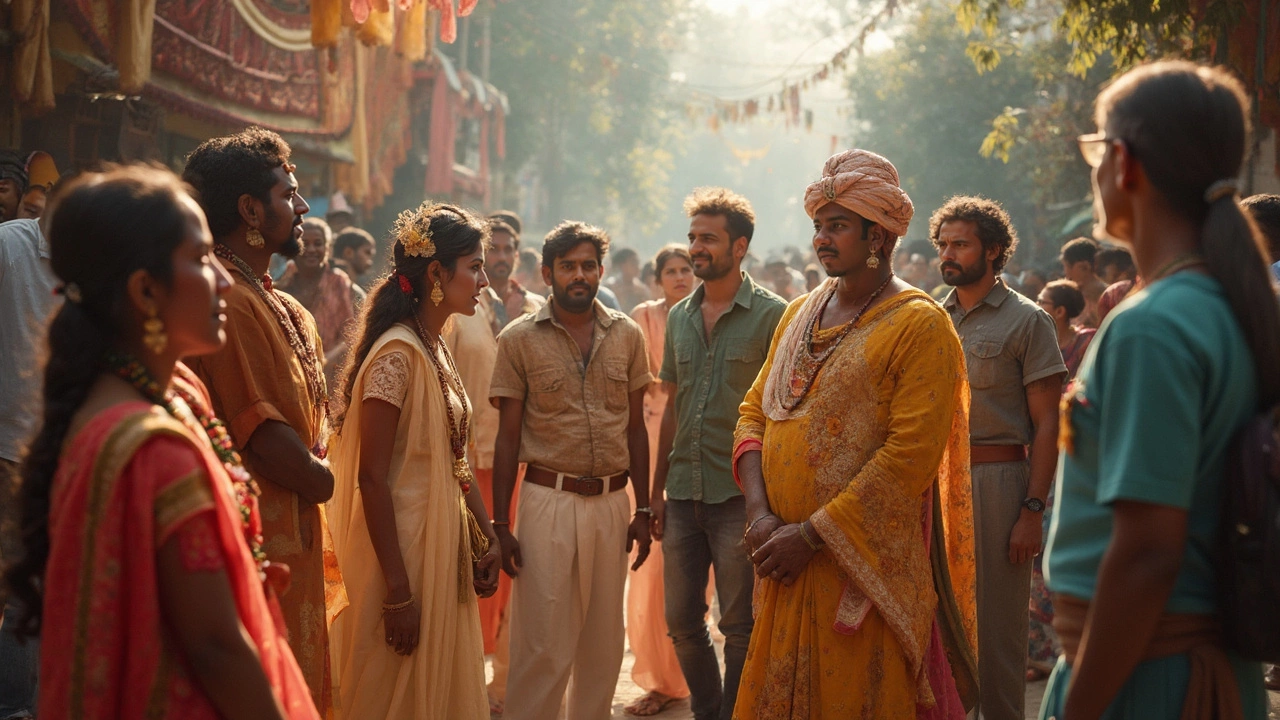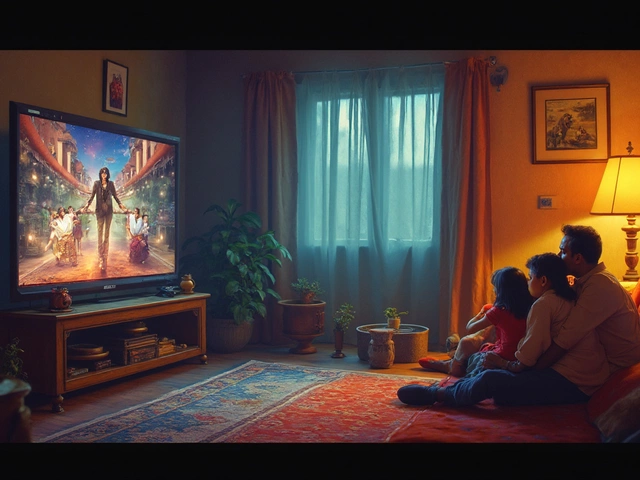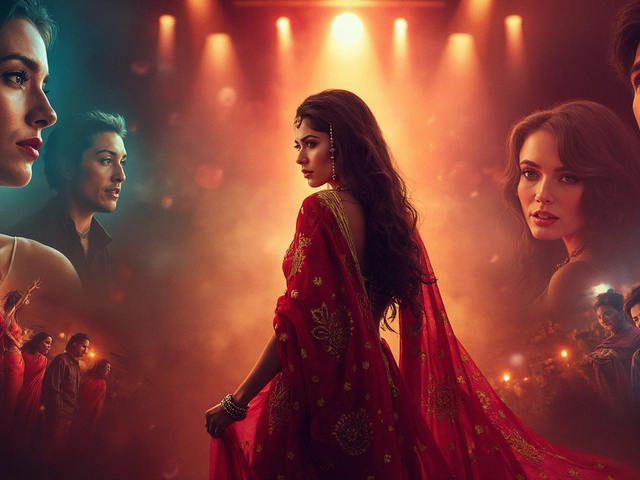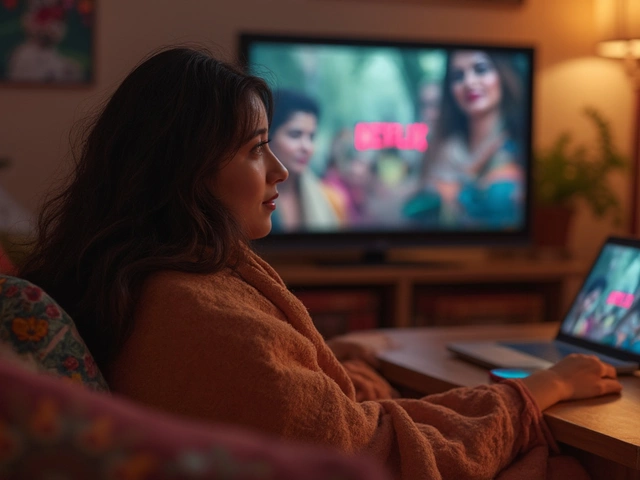Ever wondered if there's an age cap on creativity and leadership in Indian cinema or corporate boardrooms? Let's break it down. When it comes to corporate settings, the Companies Act of India does play a part by stipulating age requirements. For instance, a managing director should typically not exceed the age of 70 unless a special resolution is passed. Surprisingly though, this number often doesn’t hold much sway in Bollywood and beyond.
Take a look around at the Indian film industry, and you'll notice that many famous directors continue to make waves well past what corporations might consider 'retirement age.' The brilliance of seasoned directors proves that age is just a number. From blockbusters built on decades of experience to fresh narratives from new talent, the movie business thrives on the diverse insights a variety of age groups bring. So, while the rules exist, does creativity ever really age? Keep reading; there's more to uncover ahead!
- Legal Framework
- Cinema vs. Corporate Rules
- Influential Directors Beyond Age
- Notable Exceptions
- Career Longevity Tips
- Industry Trends
Legal Framework
Let’s talk about the nuts and bolts of the legal side when it comes to the age limit for directors in India. The Companies Act, 2013 lays out the rules here, particularly for folks involved in companies. According to Section 196 of the Act, there's a rule that a managing director or whole-time director must not be over the age of 70. But, here's the kicker—companies can get around this if they pass a special resolution. So essentially, if your board's cool with it and everyone agrees, age is just a number.
However, the same set of rules doesn’t always apply across the board, especially in the creative sector like cinema. The directors India scene isn’t tethered to the same age limits as corporate settings. Age restrictions tend to be lenient or practically non-existent in areas focused on creative endeavors.
Why the Difference?
It’s all about the nature of the job. Corporate settings often look for fresh faces with innovative ideas, anchored by mature, experienced leaders, hence specified ages. But cinema thrives on a mix of experience, creativity, and innovation, something that doesn’t fall into a neat formula. The legal framework reflects this by providing the flexibility needed for different sectors.
So, while the legal framework is there to provide organization and structure, especially in large bustling corporations, it doesn’t exactly put a hard stop on older directors bringing their vision to life on the silver screen. Sounds fair, right?
Cinema vs. Corporate Rules
There's an interesting dynamic at play when comparing corporate regulations to the world of cinema in India. Corporate directors, as outlined by the Companies Act, face certain age restrictions. For example, a managing director can't usually be over 70 years old. Beyond this age, continuing in the role requires a special resolution, highlighting the formalities of corporate structures.
On the flip side, the Indian film industry operates on a different wavelength. Here, creativity and experience are valued irrespective of age. Take some of India's legendary directors: names like Satyajit Ray and Yash Chopra continued their directorial magic well past traditional retirement age, proving that age doesn't limit cinematic vision.
Why is this difference so pronounced? It all boils down to the nature of both fields. In cinema, storytelling and innovation trump procedural guidelines. The rules in corporate settings are there to ensure compliance and fresh perspectives but might seem stifling where art is concerned.
Interestingly enough, there's no hard-and-fast rule stopping an individual from shining both on the corporate front and in the cinematic universe. However, the key takeaway is how age influences perception differently across these sectors. With the recent trend of seasoned directors producing new blockbusters, it’s clear that the film industry embraces different values.
Ever wondered if there's some magic number where creativity falters? The film world seems to say no. Unlike corporate boards where regulations detail 'retirement,' cinema boards, or sets, often run with talent because ultimately, it's about the artistry, not the age.
Influential Directors Beyond Age
In the dynamic and culturally rich landscape of Indian cinema, age often proves to be nothing more than a number. The magic of movies transcends generations, and this is evident in the way many famous directors in India continue to shape the industry long after they reach conventional retirement age.
Karan Johar: Reinventing Glamour
Take Karan Johar, for instance. Known for his glitzy, larger-than-life films, Johar continues to redefine modern cinema, featuring youthful vigor and fresh themes while leveraging his extensive industry experience. Despite being in his 50s, he's still a powerhouse of creative energy.
Mani Ratnam: Master of Storytelling
With a career spanning over four decades, Mani Ratnam is another example of a director who’s as relevant today as when he began. His unique storytelling skills and poignant narratives have left an indelible mark on both South Indian and Hindi cinema. He's in his 60s now and doesn't seem to be slowing down!
Shekhar Kapur: Bridging Genres
Then there's Shekhar Kapur, who brought us classics like Bandit Queen and Elizabeth. His ability to bridge Indian stories with global audiences makes him a director who keeps contributing valuable insights to the art form, regardless of age.
Sure, there might be regulations here and there about directors related to maximum working age, especially in more bureaucratic roles, but the creative space allows for limitless expression. Whether it's the latest blockbuster or an indie surprise, the industry remains open to those who can wield a camera and create art.

Notable Exceptions
While India has guidelines regarding age limits for directors, particularly in corporate settings, the world of cinema operates on a different wavelength. In the entertainment industry, it's common to see directors who continue to make a mark far beyond conventional retirement norms. Here, age is often celebrated as a sign of wisdom and experience, not a hindrance.
Veteran Directors Who Define Timeless Creativity
Let's talk about some iconic directors who have proved that age is no barrier to success in Indian cinema. Consider the legendary Satyajit Ray, who was renowned for his compelling storytelling well into his senior years. Ray's influence remains unmatched, opening pathways for many aspiring directors in and out of India.
Another fantastic example is Shyam Benegal whose work spans decades and includes films that many consider masterpieces. Even today, Indian cinema is rife with veteran directors shaping the industry, effortlessly blending traditional storytelling with contemporary themes.
Age-Defying Success Beyond the Silver Screen
Directors like Adoor Gopalakrishnan continue to receive international acclaim. His films are celebrated globally, showcasing India's cultural values while questioning societal norms. Despite his age, Gopalakrishnan remains an active contributor to discussions around cinema and culture.
Age limits might be a factor in boardrooms, yet in Indian cinema, it's the weight of one's portfolio and vision that often dictates longevity and relevance. Indeed, experience and age become artistic assets, not liabilities. For those passionate about filmmaking, age merely enhances their narrative voice, helping them reach newer heights.
Career Longevity Tips
Staying relevant and successful as a director in India requires more than just talent. You’ve got to keep evolving. Let’s explore some essential tips for ensuring you remain a significant figure in the industry, whether you're a veteran or just getting started.
Stay Updated with Industry Trends
The world of cinema is always changing. New technologies and evolving audience tastes mean that what worked yesterday might not work tomorrow. Keep track of the latest trends, whether it’s incorporating virtual reality into films or telling stories that resonate with today’s audience.
Networking is Key
Possessing a strong network can open many doors. Make a point to connect with other professionals at industry events or even on social media platforms like LinkedIn or Instagram. Establishing these relationships can lead to exciting collaborations and opportunities.
Embrace Lifelong Learning
No matter how long you've been directing, there's always something new to learn. Attend workshops or online courses focused on new filmmaking techniques or storytelling methods. Embrace new tools and software that can add a fresh perspective to your work.
Balancing Creativity with Sustainability
The key to long-term success is finding a balance between creative projects and those that ensure financial stability. Many famous directors in India take on commercial projects alongside their passion projects to maintain this equilibrium.
| Decade | Technology | Trend |
|---|---|---|
| 2010s | Digital Filmmaking | Socially Conscious Cinema |
| 2020s | Streaming Platforms | Short-Format Content |
Invest in a Strong Team
Your team is your backbone. Cultivate a group that you trust and that challenges you to innovate. A dedicated and talented crew can bring your vision to life in ways you might not expect.
In summary, career longevity as a director in India isn’t just about a single hit film. It's about staying curious, adaptable, and connected in a constantly evolving industry. After all, a great director is a lifelong student of their craft!
Industry Trends
What's catching everyone's eye in the world of Indian cinema? Well, the trends seem to dovetail with the thriving careers of directors, regardless of age—highlighting an industry where creativity has no shelf life. One trend that's worth calling attention to is the rise of OTT platforms. They've become game-changers, offering a wider stage for directors to experiment with content and storytelling techniques without the traditional constraints of box office hits and misses.
Inclusivity and Diversity
Gone are the days when movies followed a predictable formula. Audiences today crave authenticity and diverse stories. This shift has opened the doors for directors of various ages to make their mark by telling stories that resonate with different demographics. And with increasing opportunities for young women directors entering the spotlight, we're witnessing a dynamic shift towards more inclusive narratives.Technology and Innovation
Directors are embracing cutting-edge technology to bring their visions to life. From using CGI in unique ways to incorporating AI for post-production magic, technology is reshaping how Indian movies are made. This allows both famous directors and newcomers to push creative boundaries further than ever before.Tapping into Nostalgia
There's a noticeable trend of revisiting classic hits, either by remakes or sequels. This not only draws in older fans who are familiar with these stories but also introduces them to younger audiences. Famous directors India-based often find themselves at the helm of these projects, leveraging their prestige and experience for successful launches.| Year | OTT Releases | Box Office Releases |
|---|---|---|
| 2022 | 120 | 50 |
| 2023 | 150 | 55 |
| 2024 | 180 | 60 |
Clearly, the cinema landscape in India is a fascinating space, bustling with industry trends that blend tradition and innovation. From embracing streaming services to leaning into tech marvels and retelling the classics, directors have an ever-expanding toolkit to delight audiences of all ages. It’s a thrilling time to be part of the storytelling community! So, whether you're a seasoned fan or a budding filmmaker, there's something evolving for everyone.







Post A Comment